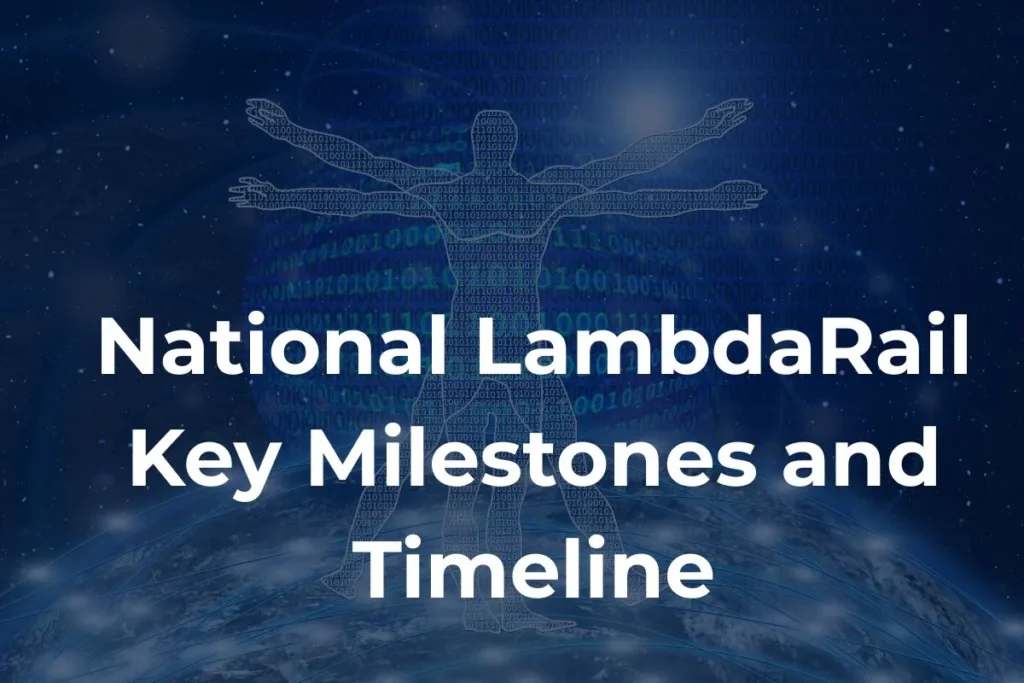In today’s world, technology has changed the way we live, work & connect. But before cloud computing & streaming became everyday parts of our lives, researchers & scientists needed a powerful network that could handle big data & also great experiments. That’s where National LambdaRail (NLR) came into picture.
NLR was a high-speed & advanced networking infrastructure. It supported research & education in the United States. Though it’s no longer active today, it played a crucial & significant role in shaping the future of research networking. It was the best pioneer in this field. Let’s take a look at its key milestones as well as timeline from launch to shutdown.
What Was National LambdaRail?
Before diving into the timeline, it’s important to understand what NLR was & what was it’s mission.
National LambdaRail was a nationwide fiber-optic network. It was built specifically for the research & education (R&E) community in the States. It was launched in the early 2000s. It was launched to give scientists & researchers access to high-performance networking. Unlike normal regular internet services, NLR offered committed bandwidth & more control to users. This makes it ideal for scientific experiments, data sharing & innovation.
The name “LambdaRail” comes from the Greek letter λ (lambda). This symbol is used in physics to represent a wavelength of light. In fiber-optic networks, various wavelengths (lambdas) can be used to carry multiple data streams over a single fiber. This idea of using multiple lambdas for huge data transport was core to NLR’s mission.

Key Milestones and Timeline
Let’s walk through the key milestones in National LambdaRail’s journey. We have it all from its ambitious beginning to its mixed emotion closure.
2003: The Launch of National LambdaRail
In the year 2003, NLR was officially launched. It wasn’t just another internet provider, it was made to be a amazing research network that could support the high needs of scientific work.
At the time, existing networks like Internet2 were already supporting some R&E projects. But NLR aimed to take things one-notch further. It was owned & also operated by the research community itself, not by a commercial company. That meant researchers could control how the network was used along with experiment with new techs.
Some main features of the 2003 launch included:
- A 10 Gbps (gigabits per second) backbone which was very fast for that time.
- A nationwide infrastructure connecting major research organizations.
- The ability to allocate dedicated bandwidth, or lambdas, for peculiar projects.
This launch was a big deal for universities, federal labs& few other organizations that needed a flexible & powerful network.
2006: Full Operation and Expansion
By 2006, National LambdaRail had reached full operational status. This was the network’s golden era. It now stretched over 12,000 miles across the United States & also connected more than 280 institutions.
Here’s what full operation meant in that year:
- Stable & fully functional connections between major research labs or hubs.
- Support for large-scale scientific experiments. Experiments such as those involving high-energy physics or climate modeling.
- Collaborations with other networks & universities to share & distribute data at record speeds.
Some noteworthy uses of NLR during this time included:
- CERN’s Large Hadron Collider data being shared with U.S. institutions or organizations.
- Early development as well as testing of telemedicine. It allowed doctors to consult patients remotely using real-time video & diagnostics.
- Advanced genomics as well as climate science work that required stagnation petabytes of data.
NLR was not just about speed but it was also about innovation. The network let researchers try out new techs, like software-defined networking (SDN), IPv6, and network virtualization. They allowed it long before these became mainstream.
2010s: Challenges and Competition
By the onset of 2010s, things started to get tough for NLR.
- Fundingpressures began to start. NLR was initially backed by over $100 million in funding from member institutions. Later on sustaining operations became difficult without long-term financial support.
- Competitionalso increased. Internet2, another high-speed network for research, began expanding its capabilities & also partnerships.
- Then later on private sector caught up. Commercial ISPs started offering faster connections & also cloud services like AWS, Google Cloud as well as Microsoft Azure began supporting research needs.
NLR also faced internal leadershipissues & also shifting priorities among its member institutions. As the digital landscape evolved, some universities as well as organizations chose to invest in other platforms that gave similar or more cost-effective services.
2014: Shutdown of National LambdaRail
In 2014, National LambdaRail was officially closeddown. It didn’t happen all at once. The network’s decline was gradual. Some regional networks as well as research projects moved to other platforms, while others scaled down their data-sharing needs. Eventually, NLR could no longer continue its operations.
The shutdown marked the end of a bold experiment in non-commercial & community-owned infrastructure. However, many of the technologies as well as innovations developed on NLR laid the framework for future research networks & also inspired more efficient data handling techniques.
Even though the physical network of NLR is gone, its legacy continues.
Why Did National LambdaRail Matter?
It might be simple to overlook a network that served scientists & researchers behind the scenes, but NLR’s contributions were indispensable:
- It enabled scientific boost by allowing researchers to share & also analyze large data sets in real time.
- It offered a testing ground for new-age networking tech. Out of these many are now standard.
- It proved that a non-commercial & community-driven internet infrastructure could be possible & successful, at least for a time.
For more than 10 years, NLR helped the U.S. stay ahead in global research & innovation. It showed the importance of investing in ace-performance networking for science & education.

Hello! I’m Kaylani , a professional content writer with a knack for breathing life into words. I have been providing high-quality, research-driven content in Sectors like Technology & Personal Finance . With a background in Finance Tech Management , I specialize in turning complex information into engaging content that resonates with a wide.
